Madame Tussauds: The forgotten killers who were forged in wax
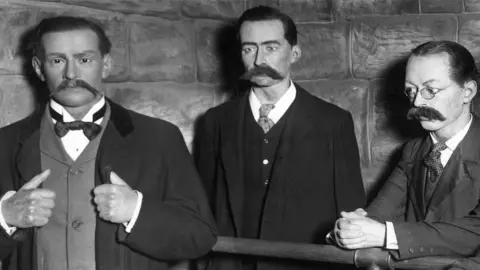 Getty Images
Getty ImagesTrue-crime stories have seemingly never been more popular, but our fascination with the macabre is as old as storytelling itself.
Madame Tussaud, who understood the appeal of villainy better than most, famously immortalised the murderous in wax at her Chamber of Horrors, which was recently restored to the London attraction she founded after a six-year absence.
Waxworks to have featured there include those of figures as notorious as Adolf Hitler, Charles Manson and Dr Crippen - although as the makers of the many recent true-crime TV series and podcasts have come to realise, it's not necessarily the best-known stories of depravity that are the most captivating.
Who are the Chamber of Horrors' forgotten killers?
The most wanted man in England
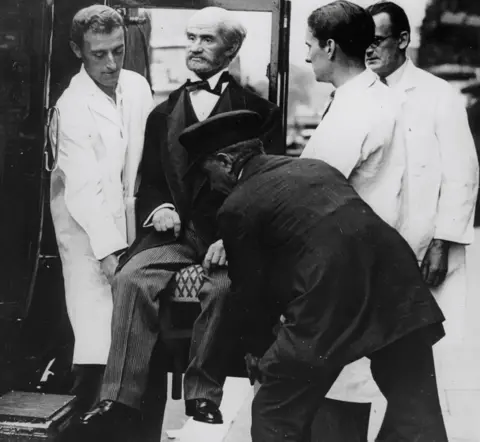 Getty Images
Getty ImagesIn November 1876, two brothers went on trial for the murder of PC Nicholas Cock, who had been shot during a foiled burglary three months earlier in Manchester. As one of them, 19-year-old William Habron, was found guilty and sentenced to death, watching in the public gallery was said to be the actual killer - a serial burglar called Charles Peace.
At the time of the trial, Peace was living in the Sheffield suburb of Darnall. The day after the teenager was convicted, Peace shot and killed a former neighbour called Arthur Dyson, whose wife the career criminal had become obsessed with.
There was no question of his avoiding suspicion over this death though and he went on the run from Sheffield, becoming the most wanted man in England.
Peace started afresh in London using the name Thompson but in October 1878 he was arrested for shooting a police officer during a burglary in Blackheath. He was convicted of attempted murder and sentenced to life in prison.
Peace's mistress told police who he really was and he was transported north to face trial for Dyson's murder. Peace is said at one point to have leapt through a train carriage window in a bid to escape, only for a warden to grab him by the ankle mid-flight - although other accounts have him being found unconscious next to the railway line after successfully flinging himself from the train.
Peace was sentenced to death for the shooting of his neighbour and, as he awaited his execution at Armley Prison in Leeds in 1879, he confessed to the murder of Cock. Fortunately, Habron's death sentence had been commuted to life imprisonment and he was released.
The Clapham Common Murder
 Getty Images
Getty ImagesAs dawn broke over Clapham Common on 1 January 1911, 48-year-old landlord Leon Beron was discovered brutally stabbed and beaten and with "S" shapes carved into the side of his face.
Stinie Morrison (sometimes spelt Steinie) was charged with his murder. The prosecution claimed the 29-year-old had lured Beron into a taxicab and attacked him during a robbery, but the defendant's lawyers argued the killing had been carried out by a group of Russians, with the marks on Beron's face denoting the word "spy".
Morrison - who was discovered in possession of the dead man's gold watch - was ultimately found guilty and sentenced to death, although he went on to be handed a life sentence by then-Home Secretary Winston Churchill. Morrison died in jail 10 years later following a hunger strike.
The Hampstead Murders
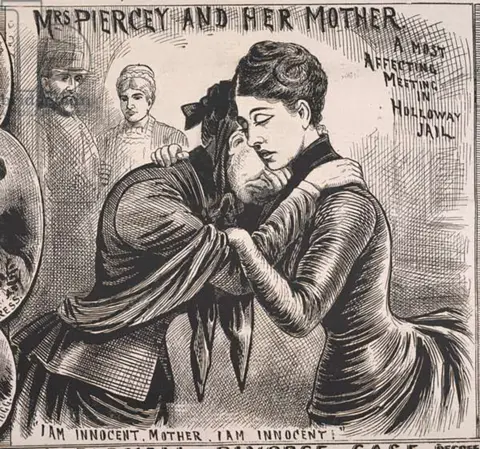 Bridgeman Images
Bridgeman ImagesOn 24 October 1890, Mary Eleanor Wheeler (who used the surname of her former partner John Charles Pearcey) invited her friend Phoebe Hogg to her north London lodgings.
Hogg, who was married to a man with whom 24-year-old Pearcey was having an affair, was discovered dead on a pavement in a south Hampstead street later the same day. Her skull had been crushed and her throat cut savagely.
The next day Hogg's 18-month-old daughter Tiggy was found dead, apparently having been suffocated, in a field in west Hampstead.
The infant's heavily bloodstained pram was discovered about a mile away. Witnesses said they had seen Pearcey pushing it around the streets, and it was alleged that she had been moving the corpse of Hogg with her daughter crushed underneath.
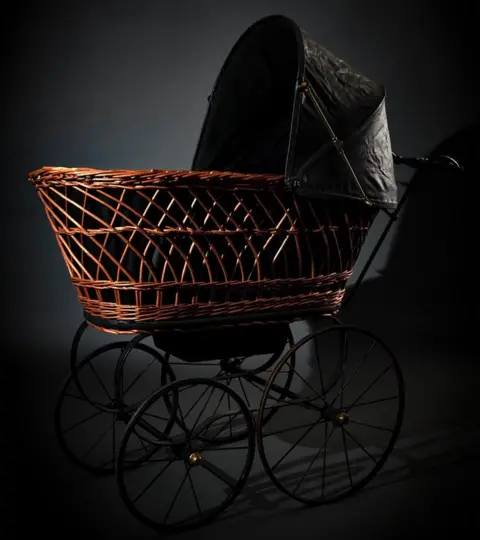 Madame Tussauds
Madame TussaudsAs police searched Pearcey's home, she began playing the piano and singing. When she was questioned about the blood splattered around the room and on a poker and knife, she was said to have explained it by chanting: "Killing mice! Killing mice! Killing mice!"
Pearcey maintained her innocence throughout her trial but was convicted of murder and hanged at Newgate Prison on 23 December 1890.
Such was Pearcey's notoriety that when her waxwork was unveiled at Madame Tussauds three days after she was executed, it was reported that more than 30,000 people blocked Marylebone Road as they struggled to get the chance to see it.

A horrible history
 Getty Images
Getty ImagesBy the time of the Pearcey case, Madame Tussauds' artists would go to trials to sketch those accused of grisly crimes and have the waxworks ready in time to make the most of the public's morbid fascination.
"The attraction has always been pegged as this sort of travelling newspaper, in a way," historian and archivist Zoe Louca-Richards explains.
The origins of the Chamber of Horrors date back to the Cavern of Grand Thieves, which was opened by Philip Curtius in Paris in 1783, Ms Louca-Richards says.
"He was basically Marie Tussaud's mentor. He taught her craft in wax... and he basically did what the chamber does - he was portraying the criminals of French society in the late 1700s to go alongside his other salon that was portraying the famous people."
 Museum of London/Getty Images
Museum of London/Getty ImagesTussaud inherited Curtius's wax exhibition and, after bringing her works on tour to Britain in 1802, she established a permanent base in London with a space included for her favourite criminals.
"Marie Tussaud, when she first started, she was obviously very interested in anything which was really sensational in the press," Ms Louca-Richards says.
"The way we consume true-crime documentaries and things like that now, it's been there forever."

The Brides in the Bath
 Getty Images
Getty ImagesGeorge Joseph Smith was hanged in Maidstone Prison on 13 August 1915 for the murders of three women - Bessie Mundy, Alice Burnham and Margaret Lofty - all of whom he had drowned in bathtubs shortly after marrying them bigamously.
It was discovered Smith had wed multiple women in various parts of the country over several years, and had in some cases taken out insurance policies on his wives or got them to add him to their wills.
Police were initially baffled by how the three women had died in relatively small bathtubs, apparently without any struggle, until the case was looked into by the Home Office pathologist Bernard Spilsbury.
Tests were conducted on female divers in a bid to solve the mystery. When raising the ankles of one of them in a sudden movement, she lost consciousness almost immediately and the precise method Smith used to murder his victims was clear.
The Acid Bath Murders
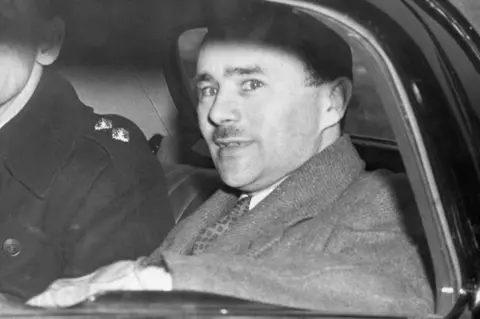 Getty Images
Getty ImagesBetween 1944 and 1949, London conman John Haigh beat to death and fatally shot six people for financial gain: William McSwan and his parents Donald and Amy McSwan, Archibald Henderson and his wife Rosalie, and Olive Durand-Deacon.
He dumped all of his victims' bodies in a large drum filled with sulphuric acid to dispose of the evidence.
Haigh was eventually arrested and confessed to the killings, pleading insanity. He claimed he had drunk a cup of all of his victims' blood. He apparently believed, mistakenly, he could not be convicted of murder because the bodies of his victims were not found.
Haigh was found guilty within minutes by a jury at Lewes Assizes and was executed by hanging at Wandsworth Prison.
He bequeathed his suit and shoes to Madame Tussauds.
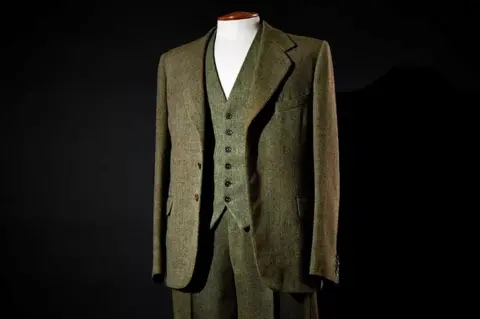 Madame Tussauds
Madame TussaudsAll images subject to copyright

Follow BBC London on Facebook, Twitter and Instagram. Send your story ideas to [email protected]
